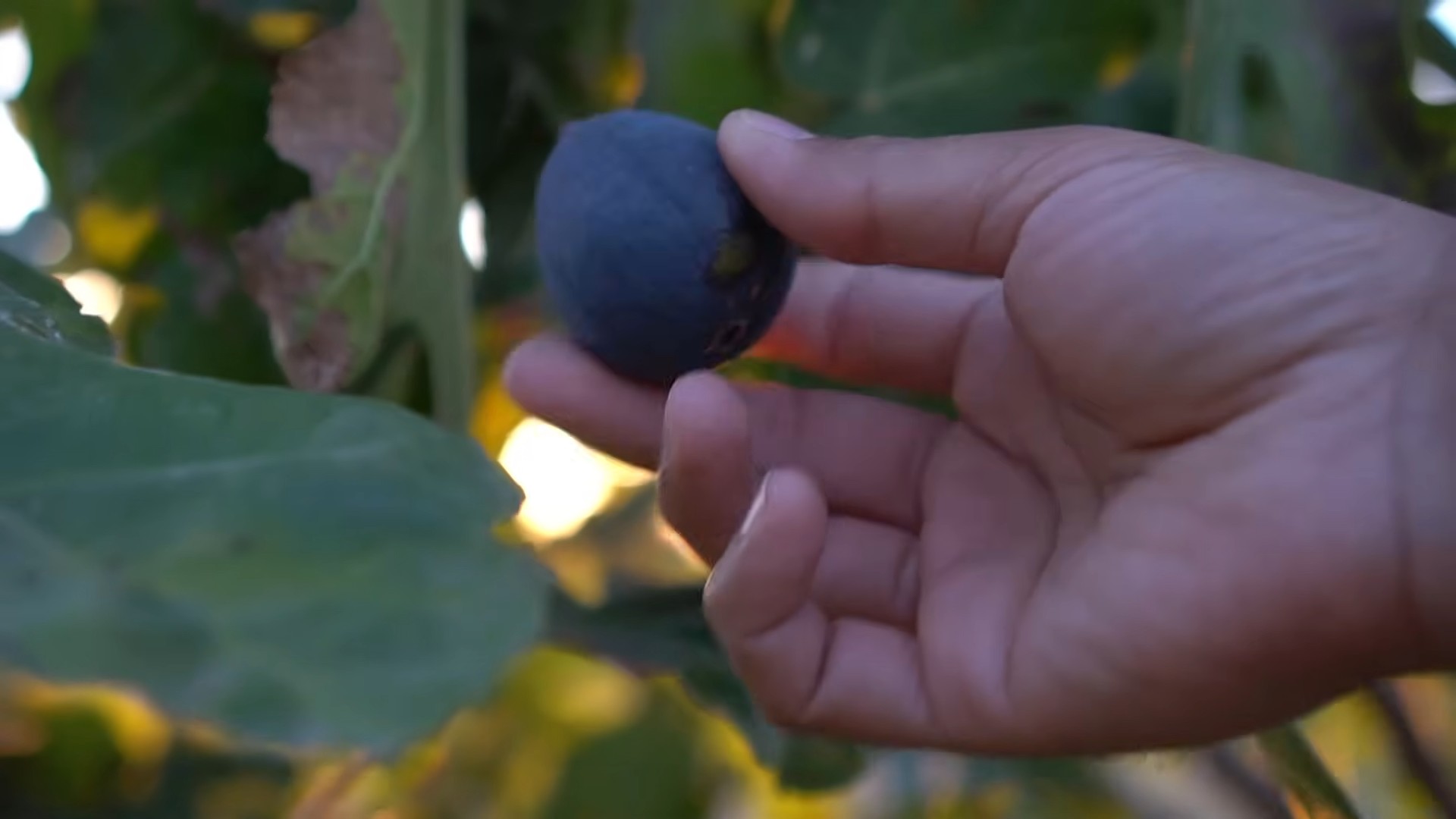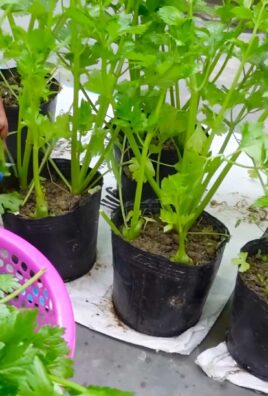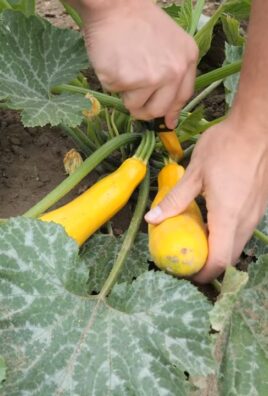Growing Backyard Fig Tree can seem daunting, but trust me, it’s more rewarding than you might think! Imagine stepping outside your back door and plucking a sun-ripened, juicy fig straight from your own tree. Sounds like a dream, right? Well, it doesn’t have to be! For centuries, fig trees have been cherished across cultures, from ancient Rome where they symbolized prosperity and peace, to the Mediterranean where they’re a staple in local cuisine.
But why should you consider growing your own fig tree? Well, store-bought figs simply can’t compare to the flavor of a freshly picked one. Plus, you’ll know exactly where your food is coming from, avoiding any unwanted pesticides or chemicals. And let’s be honest, there’s a certain satisfaction that comes with nurturing a plant and reaping the delicious rewards.
This DIY guide is designed to take the mystery out of growing backyard fig tree. I’ll walk you through everything you need to know, from choosing the right variety for your climate to providing the proper care and maintenance. Whether you’re a seasoned gardener or a complete beginner, I’m confident that you can successfully grow your own fig tree and enjoy its bounty for years to come. So, grab your gardening gloves, and let’s get started!

Growing Your Own Backyard Fig Tree: A DIY Guide
Okay, so you want to grow your own fig tree? Awesome! I’m here to tell you it’s totally doable, even if you don’t have a green thumb the size of Texas. Figs are relatively low-maintenance once established, and the reward of fresh, sweet figs right from your backyard is absolutely worth the effort. Let’s get started!
Choosing the Right Fig Variety
Before we even think about digging a hole, we need to talk about fig varieties. Not all figs are created equal, and some are better suited for certain climates than others.
* Consider your climate: This is the most important factor. If you live in a colder climate, you’ll want a cold-hardy variety like ‘Chicago Hardy’, ‘Brown Turkey’, or ‘Celeste’. These can withstand temperatures down to 10-15°F (or even lower with some protection). If you live in a warmer climate, you have a wider range of options.
* Self-pollinating vs. Smyrna types: Most fig varieties are self-pollinating (also called common figs), meaning they don’t need another fig tree to produce fruit. Smyrna figs, on the other hand, require pollination by a specific wasp, which isn’t present in all areas. Unless you know for sure that the fig wasp is in your region, stick with self-pollinating varieties.
* Fruit size and flavor: Fig varieties differ in fruit size, color, and flavor. Do some research to find a variety that appeals to your taste buds. ‘Brown Turkey’ is a popular choice for its mild flavor and reliable production. ‘Black Mission’ is known for its rich, sweet flavor. ‘Kadota’ is a green fig with a mild, honey-like flavor.
* Growth habit: Consider the size of your yard. Some fig trees can grow quite large, while others are more compact. If you have limited space, look for dwarf varieties or consider growing your fig tree in a container.
Preparing the Planting Site
Alright, you’ve picked your fig variety. Now it’s time to get the planting site ready. This is crucial for giving your fig tree the best possible start.
* Sunlight: Fig trees need at least 6-8 hours of direct sunlight per day. Choose a location that gets plenty of sun.
* Soil: Fig trees prefer well-draining soil. They don’t like to sit in soggy soil, which can lead to root rot. If your soil is heavy clay, amend it with plenty of organic matter, such as compost, aged manure, or peat moss. This will improve drainage and aeration.
* Space: Give your fig tree plenty of room to grow. Depending on the variety, fig trees can spread 15-30 feet wide. If you’re planting multiple fig trees, space them at least 15 feet apart.
* Protection from wind: Fig trees can be damaged by strong winds. Choose a location that is sheltered from strong winds, or provide some wind protection, such as a fence or wall.
Planting Your Fig Tree
Okay, the moment we’ve been waiting for! Let’s get that fig tree in the ground.
1. Dig the hole: Dig a hole that is twice as wide as the root ball and just as deep. This will give the roots plenty of room to spread out.
2. Amend the soil: Mix some compost or other organic matter into the soil you removed from the hole. This will provide nutrients and improve drainage.
3. Remove the tree from the container: Gently remove the fig tree from its container. If the roots are circling the pot, gently loosen them with your fingers.
4. Place the tree in the hole: Place the fig tree in the hole, making sure that the top of the root ball is level with the surrounding soil.
5. Backfill the hole: Backfill the hole with the amended soil, gently tamping it down as you go.
6. Water thoroughly: Water the fig tree thoroughly after planting. This will help settle the soil and get the roots off to a good start.
7. Mulch: Apply a layer of mulch around the base of the tree. This will help retain moisture, suppress weeds, and regulate soil temperature. Use organic mulch, such as wood chips, straw, or shredded bark. Keep the mulch a few inches away from the trunk of the tree to prevent rot.
8. Stake (optional): If your fig tree is young and spindly, you may want to stake it to provide support. Use a sturdy stake and tie the tree to the stake with soft twine. Be sure to check the ties regularly and loosen them as the tree grows.
Caring for Your Fig Tree
You’ve planted your fig tree! Now comes the ongoing care to ensure it thrives and produces delicious figs.
* Watering: Water your fig tree regularly, especially during dry periods. Fig trees need consistent moisture to produce fruit. Water deeply, soaking the soil around the base of the tree. Avoid overwatering, which can lead to root rot.
* Fertilizing: Fertilize your fig tree in the spring with a balanced fertilizer. Follow the instructions on the fertilizer label. Avoid over-fertilizing, which can damage the tree. You can also amend the soil with compost annually to provide a slow-release source of nutrients.
* Pruning: Prune your fig tree in late winter or early spring, before new growth begins. Pruning helps to shape the tree, remove dead or damaged branches, and improve air circulation. Remove any branches that are crossing or rubbing against each other. You can also prune to control the size of the tree.
* Pest and disease control: Fig trees are relatively pest and disease resistant, but they can be susceptible to certain problems. Watch out for pests like fig mites, scale, and aphids. Treat infestations with insecticidal soap or horticultural oil. Common diseases include fig rust and leaf spot. Improve air circulation and avoid overhead watering to prevent these diseases. You can also use a fungicide if necessary.
* Protecting from frost: If you live in a colder climate, you’ll need to protect your fig tree from frost in the winter. There are several ways to do this:
* Wrap the trunk: Wrap the trunk of the tree with burlap or other insulating material.
* Mulch heavily: Apply a thick layer of mulch around the base of the tree.
* Cover the tree: Cover the entire tree with a tarp or blanket.
* Grow in a container: If you grow your fig tree in a container, you can move it indoors during the winter.
Harvesting Your Figs
Finally, the best part! Harvesting your delicious, homegrown figs.
* When to harvest: Figs are ripe when they are soft to the touch and slightly droopy. The skin will also change color, depending on the variety.
* How to harvest: Gently twist the fig from the branch. If it’s ripe, it should come off easily.
* Enjoy! Eat your figs fresh, or use them in jams, preserves, or baked goods.
Growing Figs in Containers
Don’t have a yard? No problem! You can still grow fig trees in containers.
* Choose the right container: Select a large container with drainage holes. A 15-20 gallon container is a good size for a mature fig tree.
* Use a well-draining potting mix: Use a high-quality potting mix that drains well. Avoid using garden soil, which can become compacted in containers.
* Water regularly: Container-grown fig trees need to be watered more frequently than those grown in the ground. Check the soil moisture regularly and water when the top inch of soil is dry.
* Fertilize regularly: Fertilize your container-grown fig tree every 2-3 weeks during the growing season.
* Prune regularly: Prune your container-grown fig tree to control its size and shape.
* Overwintering: In colder climates, you’ll need to overwinter your container-grown fig tree indoors. Move the container to a cool, dark location, such as a garage or basement. Water sparingly during the winter.
Troubleshooting Common Fig Tree Problems
Even with the best care, you might encounter some problems with your fig tree. Here are a few common issues and how to address them:
* Fig drop: This is when figs fall off the tree before they ripen. It can be caused by a number of factors, including stress, lack of water, or poor pollination. Make sure your fig tree is getting enough water and is protected from stress. If you suspect poor pollination, you may need to hand-pollinate the figs.
* Leaf drop: This can be caused by overwatering, underwatering, or nutrient deficiencies. Check the soil moisture and adjust your watering schedule accordingly. Fertilize your fig tree with a balanced fertilizer.
* Root rot: This is caused by overwatering and poorly

Conclusion
So, there you have it! Growing your own backyard fig tree isn’t just a gardening project; it’s an investment in years of delicious, fresh figs right outside your door. We’ve walked through the essential steps, from selecting the right variety for your climate to providing the care your fig tree needs to thrive.
Why is this DIY trick a must-try? Because store-bought figs simply can’t compare to the flavor and satisfaction of harvesting your own. Imagine plucking a perfectly ripe fig, still warm from the sun, and enjoying its sweet, honeyed taste. Plus, you’ll know exactly where your food is coming from and how it was grown, avoiding any unwanted pesticides or chemicals.
But the benefits extend beyond just the taste. Fig trees are relatively low-maintenance once established, and they can add beauty and shade to your landscape. They’re also a fantastic conversation starter and a source of pride for any gardener.
Ready to take your fig growing to the next level? Consider these variations and suggestions:
* Espalier Training: Train your fig tree to grow flat against a wall or fence. This not only looks beautiful but also maximizes sunlight exposure, especially in cooler climates.
* Container Growing: If you live in a colder region, grow your fig tree in a large container. This allows you to move it indoors during the winter months, protecting it from frost. Choose a dwarf variety for container growing.
* Fig Preserves and Jams: Once your tree starts producing, experiment with making your own fig preserves, jams, or even fig-infused olive oil. The possibilities are endless!
* Propagation: Once you have a healthy tree, you can easily propagate new trees from cuttings. This is a great way to expand your fig orchard or share with friends and family.
* Companion Planting: Plant herbs like rosemary, thyme, and lavender around your fig tree. These herbs can help deter pests and attract beneficial insects.
Don’t be intimidated by the prospect of growing your own fig tree. With a little planning and effort, you can enjoy a bountiful harvest for years to come. Remember to choose a sunny location, provide well-draining soil, and water regularly, especially during dry periods.
We’re confident that you’ll find the experience of growing your own backyard fig tree incredibly rewarding. So, grab your gardening gloves, choose your favorite fig variety, and get started today!
We’d love to hear about your experiences! Share your photos, tips, and questions in the comments below. Let’s build a community of fig-loving gardeners and learn from each other. Happy growing!
Frequently Asked Questions (FAQ)
What is the best time of year to plant a fig tree?
The best time to plant a fig tree is during the dormant season, which is typically in late fall or early spring. This allows the tree to establish its roots before the growing season begins. Avoid planting during the heat of summer, as this can stress the tree and hinder its growth. If you live in an area with mild winters, fall planting is ideal. In colder climates, spring planting is often preferred to give the tree a full growing season to establish itself before winter arrives.
How much sunlight does a fig tree need?
Fig trees thrive in full sun, requiring at least 6-8 hours of direct sunlight per day. Insufficient sunlight can lead to reduced fruit production and weaker growth. When choosing a location for your fig tree, make sure it’s in an area that receives ample sunlight throughout the day. If you’re growing your fig tree in a container, you can move it around to ensure it gets enough sun.
What type of soil is best for fig trees?
Fig trees prefer well-draining soil that is rich in organic matter. They can tolerate a variety of soil types, but heavy clay soils should be amended with compost or other organic materials to improve drainage. The ideal soil pH for fig trees is between 6.0 and 6.5. Before planting, test your soil and amend it as needed to ensure optimal growing conditions.
How often should I water my fig tree?
Water your fig tree deeply and regularly, especially during the first year after planting. Established fig trees are relatively drought-tolerant, but they still benefit from regular watering, especially during dry periods. Water deeply when the top inch of soil feels dry to the touch. Avoid overwatering, as this can lead to root rot. Container-grown fig trees will need more frequent watering than those planted in the ground.
Do fig trees need fertilizer?
Fig trees benefit from regular fertilization, especially during the growing season. Use a balanced fertilizer with a ratio of 10-10-10 or 8-8-8. Apply fertilizer in early spring, just before new growth begins, and again in mid-summer. Avoid fertilizing in late fall, as this can encourage new growth that is susceptible to frost damage. Follow the instructions on the fertilizer package for application rates. Organic fertilizers, such as compost and manure, can also be used to provide nutrients to your fig tree.
How do I prune a fig tree?
Pruning is essential for maintaining the shape and productivity of your fig tree. Prune your fig tree during the dormant season, typically in late winter or early spring. Remove any dead, damaged, or crossing branches. Thin out the canopy to improve air circulation and sunlight penetration. Fig trees produce fruit on both new and old wood, so avoid excessive pruning. If you’re unsure how to prune your fig tree, consult with a local arborist or gardening expert.
How do I protect my fig tree from frost?
Fig trees are susceptible to frost damage, especially in colder climates. To protect your fig tree from frost, wrap the trunk and branches with burlap or blankets. You can also mound soil around the base of the tree to insulate the roots. For container-grown fig trees, move them indoors to a protected location, such as a garage or shed. If you experience a sudden frost, water your fig tree thoroughly before the temperature drops. This can help protect the roots from freezing.
What are common pests and diseases that affect fig trees?
Fig trees can be affected by a variety of pests and diseases, including fig rust, spider mites, and scale insects. Regularly inspect your fig tree for signs of pests or diseases. Treat infestations promptly with appropriate insecticides or fungicides. Encourage beneficial insects, such as ladybugs and lacewings, to help control pests naturally. Proper pruning and good air circulation can also help prevent diseases.
How long does it take for a fig tree to produce fruit?
Fig trees typically start producing fruit within 1-3 years after planting. The exact time frame depends on the variety of fig tree, the growing conditions, and the age of the tree when planted. Some fig varieties produce two crops of fruit per year, while others produce only one. Be patient and provide your fig tree with the care it needs, and you’ll be rewarded with a bountiful harvest of delicious figs.
Can I grow a fig tree indoors?
Yes, you can grow a fig tree indoors, especially if you live in a colder climate. Choose a dwarf variety that is well-suited for container growing. Provide your fig tree with plenty of sunlight, well-draining soil, and regular watering. Rotate the pot regularly to ensure even growth. You may need to hand-pollinate the flowers to encourage fruit production. With proper care, you can enjoy fresh figs even if you don’t have a backyard.





Leave a Comment